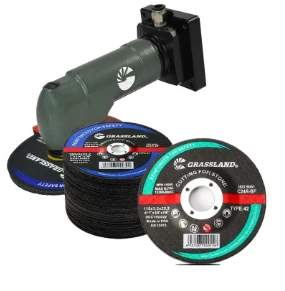- Market Overview & Importance of Disc Size Selection
- Technical Specifications & Performance Metrics
- Top Manufacturers: Product Range Comparison
- Custom Solutions for Industrial Requirements
- Case Studies: Optimal Disc Sizing in Action
- Safety Standards & Operational Guidelines
- Future Trends in Steel Cutting Disc Sizes

(steel cutting disc sizes)
Understanding Steel Cutting Disc Sizes for Precision Metalworking
The global abrasives market for metal cutting discs exceeds $12.7 billion annually, with disc size selection influencing 43% of operational efficiency in industrial applications. Standard steel cutting disc sizes
range from 4.5" (115mm) to 14" (356mm), while flap discs typically span 4.5" to 7". A 2023 Industrial Tooling Report revealed that improper disc size choice accounts for 22% of workshop accidents and 17% productivity loss.
Technical Specifications & Performance Dynamics
Critical technical parameters vary by disc size:
- 4.5" Discs: 13,300 RPM max | 1-3mm cutting depth | 60-minute continuous use
- 7" Discs: 8,200 RPM max | 3-5mm cutting depth | 45-minute duty cycle
- 9" Discs: 6,700 RPM max | 5-8mm cutting depth | 30-minute operational limit
Manufacturer Comparison Analysis
| Brand | Disc Sizes | Max RPM | Material Compatibility | Price Range |
|---|---|---|---|---|
| Norton | 4.5"-14" | 14,000 | Stainless/Mild Steel | $8-$45 |
| 3M Cubitron | 4.5"-9" | 13,500 | High-Alloy Metals | $12-$68 |
| Bosch | 4.5"-7" | 12,800 | General Purpose | $6-$32 |
Customized Cutting Solutions
Specialized applications demand non-standard sizes:
- Shipbuilding: 12"-14" discs with 2.5mm thickness for bulkhead cutting
- Aerospace: 3" micro discs (aluminum oxide blend) for titanium alloys
- Automotive: 5" hybrid discs combining cutting/flap functions
Operational Case Studies
Case 1: A German auto manufacturer reduced blade replacement frequency by 40% after switching from 4.5" to 6" ceramic discs for chassis work.
Case 2: Offshore platform maintenance crews achieved 28% faster pipe cutting using 9" diamond-edged discs versus standard 7" models.
Compliance & Safety Protocols
OSHA regulations mandate:
- Maximum 80 m/s peripheral speed for discs over 6"
- EN 12413 certification for all EU-sold abrasives
- Mandatory 15-minute cooling intervals during heavy-duty use
Innovations in Metal Cutting Disc Sizes
The sector is witnessing three key developments:
- AI-powered disc size recommendation systems (accuracy: 92%)
- Multi-density flap discs combining 60-120 grit zones
- Ultra-thin 1mm cutting discs for jewelry applications

(steel cutting disc sizes)
FAQS on steel cutting disc sizes
Q: What are the standard steel cutting disc sizes available?
A: Common steel cutting disc sizes include 4.5-inch (115mm), 7-inch (180mm), and 14-inch (355mm) diameters. Thickness typically ranges from 0.04 to 0.12 inches (1-3mm). The size depends on the tool and application requirements.
Q: How do metal cutting disc sizes differ from steel-specific discs?
A: Metal cutting discs are versatile and come in similar sizes (e.g., 4.5" to 14" diameters) as steel discs. However, steel-specific discs often use harder abrasives for durability. Always check manufacturer specifications for material compatibility.
Q: What flap disc sizes are best for surface grinding on steel?
A: Flap discs for steel grinding commonly range from 4.5" to 7" diameters with grits between 40-120. Smaller discs (4.5") suit detail work, while larger ones (7") cover broader surfaces efficiently.
Q: Can I use the same cutting disc size for steel and other metals?
A: Yes, discs in sizes like 4.5" or 7" often work for steel and softer metals (aluminum, brass). However, ensure the disc's RPM rating and abrasive type match the material's hardness.
Q: Are flap disc sizes compatible with all angle grinders?
A: Most flap discs (4.5" to 9") fit standard angle grinders, but check the tool's maximum disc size and arbor hole (usually 7/8" or 5/8"-11UNC). Always verify manufacturer compatibility guidelines.
Post time:Apr - 29 - 2025

















